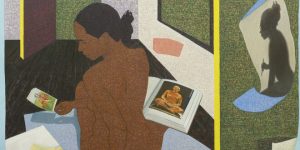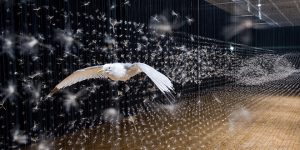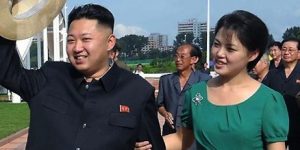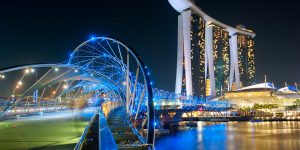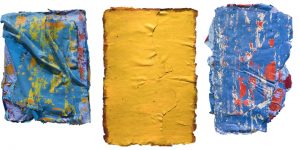Nobel Peace Centre Highlight: Sim Chi Yin
Sim Chi Yin is Nobel Peace Prize Photographer 2017
Visual storyteller Sim Chi Yin is no stranger to taking risks. As a former foreign correspondent, the Singaporean is known for raising the visibility of the under-reported topics through meticulous research and powerful multimedia narration, such as with her current exhibition ‘Ban the Bomb’ at at the Nobel Peace Centre in Oslo, Norway from 12 December 2017 to 25 November 2018.

Left: Hatches over silos which in the 1970s held missiles meant to shoot down incoming Soviet warheads, North Dakota. Right: The North Korean city of Hyesan, about 120km from North Korea’s nuclear test site. Picture by Sim Chi Yin for the Nobel Peace Center, 2017.
Sim was commissioned to showcase the work of Nobel Peace Prize 2017 winner International Campaign to Abolish Nuclear Weapons (ICAN). Tasked with documenting the environs of nuclear weapons facilities in remote places in the United States and North Korea, Sim embarked on an intense and sometimes hazardous two-month journey, travelling 6,000 kilometres along the China-North Korea border and through six North American states to photograph and document missile silos and nuclear testing sites.
Titled ‘Fallout’, Sim’s photographic series of 36 photographs and a short video installation feature five diptychs depicting haunting landscapes of locations such as an anti-ballistic missile defense radar facility, hatches over silos, and the desk of a commander in a missile site’s decommissioned control room. Images are presented in juxtaposition to each other without revealing the country in which they were taken. Unrelated to culture or nation, and presented as stand-alone weapons of mass destruction and the devastation they are programmed to cause, the exhibition gives audience the space to ponder the formidable visuals.

Left: A factory producing into the night, in Manpo, North Korea, October 2017. Right: The desk of a commander in the control room of a decommissioned Titan II Missile Site in Arizona, November 2017. Picture by Sim Chi Yin for the Nobel Peace Center, 2017.
In the two-channel video diptych titled ‘Most People Were Silent’, the camera is looking into North Korea from Mount Paektu in one film and the Cascade Mountains in Washington State in the U.S. in the other. The landscapes look strikingly similar to each other, with clouds floating by mountains in ghostly silence. Geiger counters are heard detecting radiation and sounding alarms and Julius Robert Oppenheimer, the father of the atomic bomb, speaks from an interview he gave in 1965 to NBC for the documentary ‘Hiroshima’. An excerpt from Donald Trump‘s speech is also played from the day North Korea fired its most potent missile, reminding the viewer that danger persists.
Sim is considering expanding the project further. “In this very noisy, crowded, and saturated world, with a lot of different problems, like climate change and all the rest of it, sometimes we are so overwhelmed with the problems of the world that we forget the nuclear threat is actually quite imminent,” says Sim. “As individuals we need to decide for ourselves: where do we stand on this topic?”

An anti-ballistic missile defense radar facility, North Dakota, November 2017. Picture by Sim Chi Yin for the Nobel Peace Center, 2017.
The projects Sim has produced foster awareness of important issues. Throughout the evolution of her career, from a rebel social and labour reporter who exposed the plight of migrant workers in Singapore, eliciting parliamentary discourse and the shutdown of illegal dormitories, to the intimate documentation of the slow passing of a gold-miner in China from silicosis, making him the face of the disease worldwide and raising USD16,000 for his family, the intrinsic worth of her undertakings has been potent.
With a strong interest in film, sound, and spatial installation, Sim plans to concentrate more on research-based visual projects. She has recently given a lot of thought to how people communicate and notes that she is beginning to see the difference between achieving impact and achieving reach. “I think about how I could write a story for the New York Times which would reach millions of people,” says Sim. “Or I could create an immersive experience in a gallery which may be only two thousand people would see, but people would spend an hour in that gallery, really engaging with the exhibition, hopefully coming away with a better understanding of the issue.”
More information at nobelpeacecentre.org and chiyinsim.com.
This article was written by Tanya Amador for Art Republik 18.




